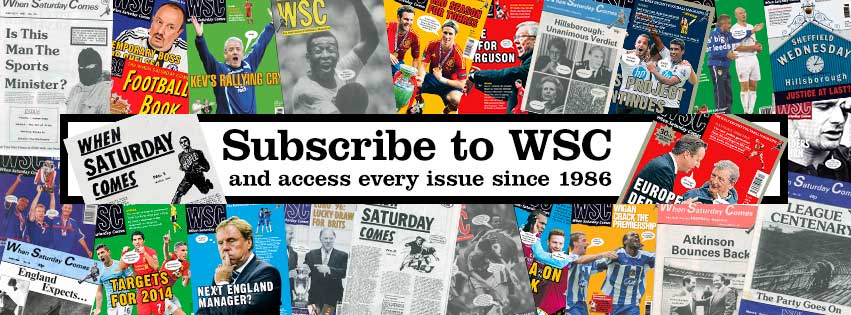It might not be the most ethically sound of practices, but managers throughout history have looked to reinforce home advantage with a word in the ear of the ground staff
25 March ~ “I have too many issues in my head to worry about the grass,” said Pep Guardiola, following claims by the Liverpool website The Anfield Wrap that Manchester City had allowed the grass to grow at the Etihad Stadium prior to the teams’ match in early January. Responding to claims that City were deliberately attempting to slow down the fast passing game of Jürgen Klopp’s side, head groundsman Lee Jackson described the story as “the fakest of fake news” and Guardiola added: “Liverpool want to play quick and we want to play quicker.”
A few weeks later, ground staff at Anfield only cleared the snow at the Kop End at half time, which Liverpool attacked after the interval, amid suggestions that a snowy surface on the opposite half of the pitch would slow the progress of Leicester’s Jamie Vardy-led counter attacks. Both clubs denied any accusations of wrongdoing, but football is littered with cases of playing surfaces being meddled with in a variety of more blatant ways.
With his team preparing to take on Malcolm Allison’s Manchester City in the FA Cup third round in January 1980, Halifax Town manager George Kirby deployed football’s classic “levelling” tactic and insisted that his groundsman pump gallons of extra water onto the Shay pitch. Halifax striker John Smith recalled: “It had snowed all week and by Thursday the pitch was ankle deep in water, thawing out slowly.” Once the pitch was flooded, Smith explained: “By kick-off the pitch was just about playable, but it looked like a soggy peat bog.” As the game wore on, City’s discomfort grew. Allison’s instruction to “pass Halifax off the pitch” became impossible as the ball stuck in the mud, and Paul Hendrie’s 75th-minute winner for Town meant that City, as Allison later described it, “literally drowned in a brown sea”.
Even Brian Clough and Peter Taylor, who insisted on a fast passing game at Derby County in the early 1970s, weren’t averse to a spot of flooding when they felt it was needed. Prior to the Baseball Ground leg of a European Cup second-round tie with Benfica in 1972, Taylor turned on the sprinklers overnight, believing that the Rams would be more at home on a quagmire. The tactic worked, as Derby ran out 3-0 winners at home. Taylor later explained: “We went more direct and scored from two corners, whereas Benfica struggled to pass it around like they normally do.”
As his club rose through the leagues in the early 1990s, Cambridge United manager John Beck deployed various tactics to ensure that his team gained small advantages. He insisted that the grass at the edges of the Abbey Stadium pitch was left longer in order that the ball would hold up for his side’s wingers to run on to. In order to further facilitate a long-ball approach, Beck insisted that during the week five-a-side matches were played in the middle of the Abbey Stadium pitch to churn up the grass, and make it more difficult for the opposition to pass their way through his team.
Wales boss Mark Hughes also insisted that the grass was left to grow at the edges of the pitch in May 2000, prior to his side’s international friendly with Brazil at the Millennium Stadium. A few yards were also trimmed off the touchlines in order to counter the threat of Brazil’s wingers. “I asked for the pitch to be made smaller. It did look very big and that would make our job a little bit more difficult,” Hughes explained. The tactic failed though, as Wales were defeated 3-0.
More successful was Rangers manager Graeme Souness’s instruction to take the Ibrox pitch in a few yards prior to his side’s European Cup clash with Dynamo Kiev during the 1987-88 season. Valeriy Lobanovskyi’s Soviet champions were known for their expansive play, and Rangers successfully curtailed Dynamo’s rhythm in the second leg, winning 2-0 at Ibrox to overturn a 1-0 deficit from the first leg. In the post-match interview, the BBC’s Barry Davies put it to Souness that Lobanovskyi had claimed that the Rangers tactics were “un-British”. Souness contented himself with an icy stare.
Perhaps the most extreme example of pitch manipulation came in the Bundesliga in 2015, when Augsburg goalkeeper Marwin Hitz sabotaged the penalty spot by digging his studs into the turf and swivelling a few times prior to facing a spot kick from Cologne’s Anthony Modeste. The latter slipped on the area Hitz had meddled with, and missed his spot kick. “It was the wrong thing to do. It won’t happen again,” Hitz explained afterwards. With teams always seeking to gain any kind of advantage over the opposition, turf tampering – in all its guises – will continue to be part of the game. Jon Spurling
This article first appeared in WSC 385, April 2019. Subscribers get free access to the complete WSC digital archive – you can find out more here
